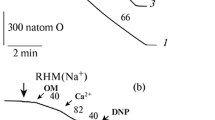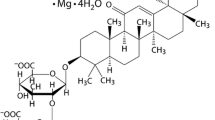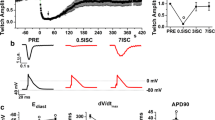Abstract
The inhibitors of the Na+/H+-exchange (NHE1) system Hoe 694 and Hoe 642 possess cardioprotective effects in ischaemia/reperfusion. It is assumed that these effects are due to the prevention of intracellular sodium (Nai) and calcium (Cai) overload. The purpose of the present study was to investigate the effects of Hoe 642 on intracellular pH, Na+ and Ca2+ (pHi, Nai and Cai) in isolated rat ventricular myocytes under anoxic conditions or in cells in which oxidative phosphorylation had been inhibited by 1.5 mmol/l cyanide. In cells which were dually loaded with the fluorescent dyes 2,7-biscarboxyethyl-5,6-carboxyfluorescein (BCECF) and Fura-2, anoxia caused acidification of the cells (from pHi 7.2 to pHi 6.8) and an increase in Cai from about 50 nmol/l to about 1 μmol/l. The decrease in pHi began before the cells underwent hypoxic (rigor) contracture, whereas Cai only began to rise after rigor shortening had taken place. After reoxygenation, pHi returned to its control value and Cai oscillated and then declined to resting levels. It was during this phase that the cells rounded up (hypercontracture). When 10 μmol/l Hoe 642 was present from the beginning of the experiment, pHi and Cai were not significantly different from control experiments. At reoxygenation, pHi did not recover, but Cai oscillated and returned to its resting level. To monitor Nai, the cells were loaded with the dye SBFI. After adding 1.5 mmol/l cyanide or 100 μmol/l ouabain, Nai increased from the initial 8 mmol/l to approximately 16 mmol/l. Hoe 642 or Hoe 694 (10 μmol/l) did not prevent the increase in Nai. In contrast, the blocker of the persistent Na+ current R56865 (10 μmol/l) attenuated the CN–-induced rise in Nai. The substance ethylisopropylamiloride was not used because it augmented considerably the intensity of the 380 nm wavelength of the cell’s autofluorescence. In conclusion, the specific NHE1 inhibitor Hoe 642 did not attenuate anoxia-induced Cai overload, nor CN–-induced Nai and Cai overload. Hoe 642 prevented the recovery of pHi from anoxic acidification. This low pHi maintained after reoxygenation may be cardioprotective. Other possible mechanisms of NHE1 inhibitors, such as prevention of Ca2+ overload in mitochondria, cannot be ruled out. The increase in Nai during anoxia is possibly due to an influx of Na+ via persistent Na+ channels.
Similar content being viewed by others
Author information
Authors and Affiliations
Additional information
Received: 1 March 1996 / Received after revision: 30 April 1996 / Accepted: 12 July 1996
Rights and permissions
About this article
Cite this article
Ruß, U., Balser, C., Scholz, W. et al. Effects of the Na+/H+-exchange inhibitor Hoe 642 on intracellular pH, calcium and sodium in isolated rat ventricular myocytes. Pfluegers Arch 433, 26–34 (1996). https://doi.org/10.1007/s004240050244
Issue Date:
DOI: https://doi.org/10.1007/s004240050244




